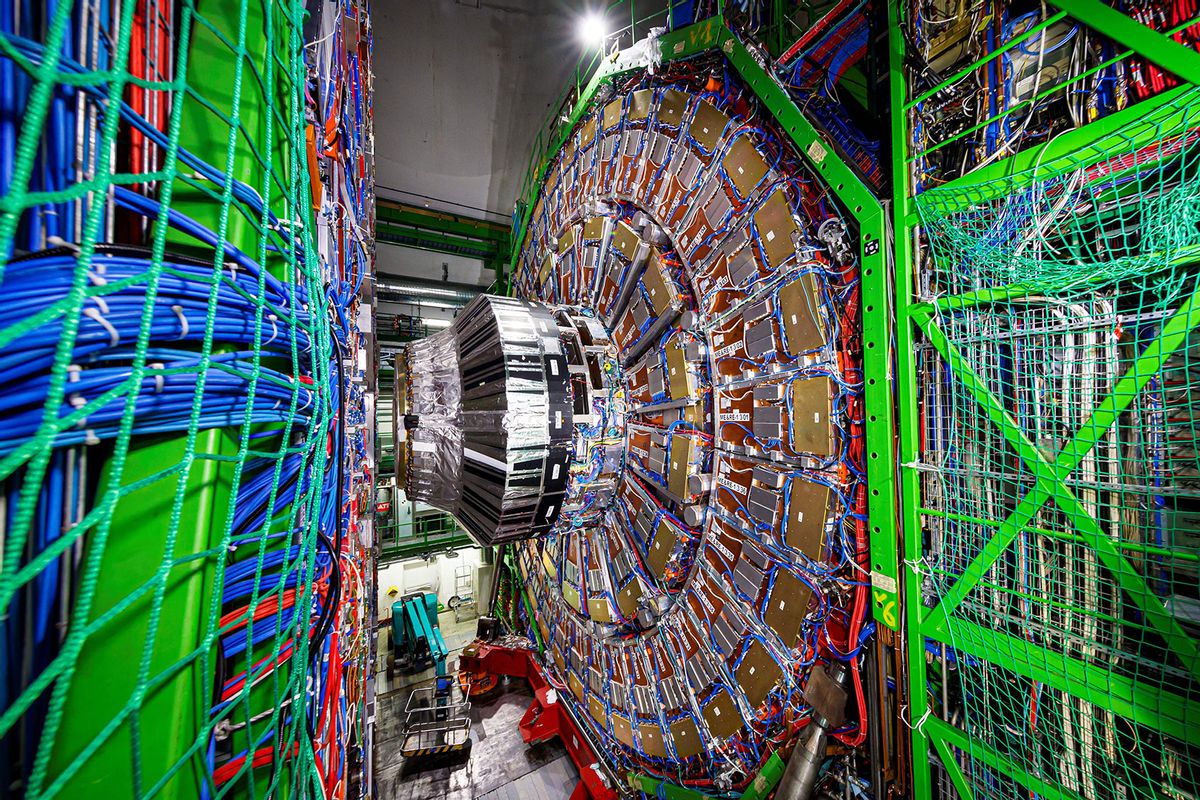Neutrinos are some of the most enigmatic particles in all of physics. Sporting a neutral charge and a mass close to zero, neutrinos rarely interact with other matter and as such have been notoriously difficult to observe. Scientists have still learned a great deal about them — including identifying three neutrino types (electron, muon and tau particles) — but observing them has been quite another matter. Although neutrinos have been detected using advanced equipment, physicists have hoped to better understand neutrinos by seeing them within a particle collider.
The result was a rousing success: An experiment that detected neutrinos unlike any other that had ever been conducted.
Now, thanks to scientists at two separate institutes, neutrinos have been detected in a collider — and the world of physics may never be the same.
To achieve this goal, researchers from FASER (Forward Search Experiment) and SND (Scattering and Neutrino Detector)@LHC utilized the Large Hadron Collider (LHC), a Swiss machine that is also the world's largest and highest-energy particle collider. It essentially exists as a giant loop built in a tunnel 27 kilometres (17 mi) in circumference. While detecting neutrinos in a collider may sound like an academic lark, the scientists who did so believe that they can learn a great deal about the atomic structure of the universe through this process.
"Neutrinos are produced very abundantly in proton colliders such as the LHC," Cristovao Vilela, part of the SND@LHC Collaboration, told Phys.org. "However, up to now, these neutrinos had never been directly observed. The very weak interaction of neutrinos with other particles makes their detection very challenging and because of this they are the least well studied particles in the Standard Model of particle physics."
FASER detected the neutrinos by arranging its detector along the line of a particle beam in such a way that the highest energy neutrinos would pass through it. Using 730 sheets of tungsten that were each 0.044 inches thick, the FASER team managed to follow the trajectories of the colliding particles. By doing this, they were able to find 153 neutrino events using their "very small, inexpensive" detector.
Similarly, the SND@LHC reported showing an additional 8 neutrino events after placing their detector to one side. Like the FASER team, this one shielded their detector in a hundred meters of rock and concrete so that most of the non-neutrino particles would not pass through.
The result was a rousing success: An experiment that detected neutrinos unlike any other that had ever been conducted.
"Previously, particle physics was thought to be divided into two parts: high energy experiments, which were required to study heavy particles, like top quarks and Higgs bosons, and high intensity experiments, which were required to study neutrinos," Jonathan Lee Feng, co-spokesperson of the FASER Collaboration, told Phys.org. "This work has shown that high energy experiments can also study neutrinos, and so has brought together the high-energy and high-intensity frontiers."
"Particle colliders have existed for over 50 years, and have detected every known particle except for neutrinos," he added.
Want more health and science stories in your inbox? Subscribe to Salon's weekly newsletter The Vulgar Scientist.
At any given second, roughly 100 trillion neutrinos pass through a human body — and leave the human unharmed.
The existence of neutrinos was first hypothesized in the 1930s, after scientists working on the development of nuclear weapons noticed that quite often nuclear reactions seemed to carry less energy than the particles which preceded them. Given that the law of conservation states that energy can be neither created nor destroyed, it stood to reason that there were subatomic particles humans did not yet know about that accounted for the lost energy.
In 1956, physicists Frederick Raines and Clyde Cowan led a team of researchers that confirmed the existence of neutrinos. Ever since, neutrinos have been detected in the Sun, during supernovas and even in interactions between cosmic rays and the upper atmosphere. Yet it has still been notoriously difficult for scientists to perform experiments with particles that are close to mass-less and do not interact with other matter. This is what makes the LHC experiments so groundbreaking.
"With each new source has come new insights, with important implications for many fields, from particle physics to geophysics to astrophysics and cosmology," the FASER collaboration writes.
Learning more about neutrinos can significantly enhance our knowledge of the universe. At any given second, roughly 100 trillion neutrinos pass through a human body — and leave the human unharmed. In 2001 scientists learned that there are three so-called "flavors" of neutrinos as they oscillates through various states. Yet although scientists know many things about neutrinos, and have performed successful experiments in the past that verify their existence, the experiments at LHC represent a giant leap forward in the body of physics knowledge about neutrinos. Feng implicitly admitted as much when he told Phys.org about the plans to build on the success of the recent experiment.
"We will be running the FASER detector for many more years, and expect to collect at least 10 times more data," Feng told Phys.org. "A particularly exciting fact is that this initial discovery only used part of the detector. In the coming years, we will be able to use the full power of FASER to map out these high energy neutrino interactions in exquisite detail."



Shares